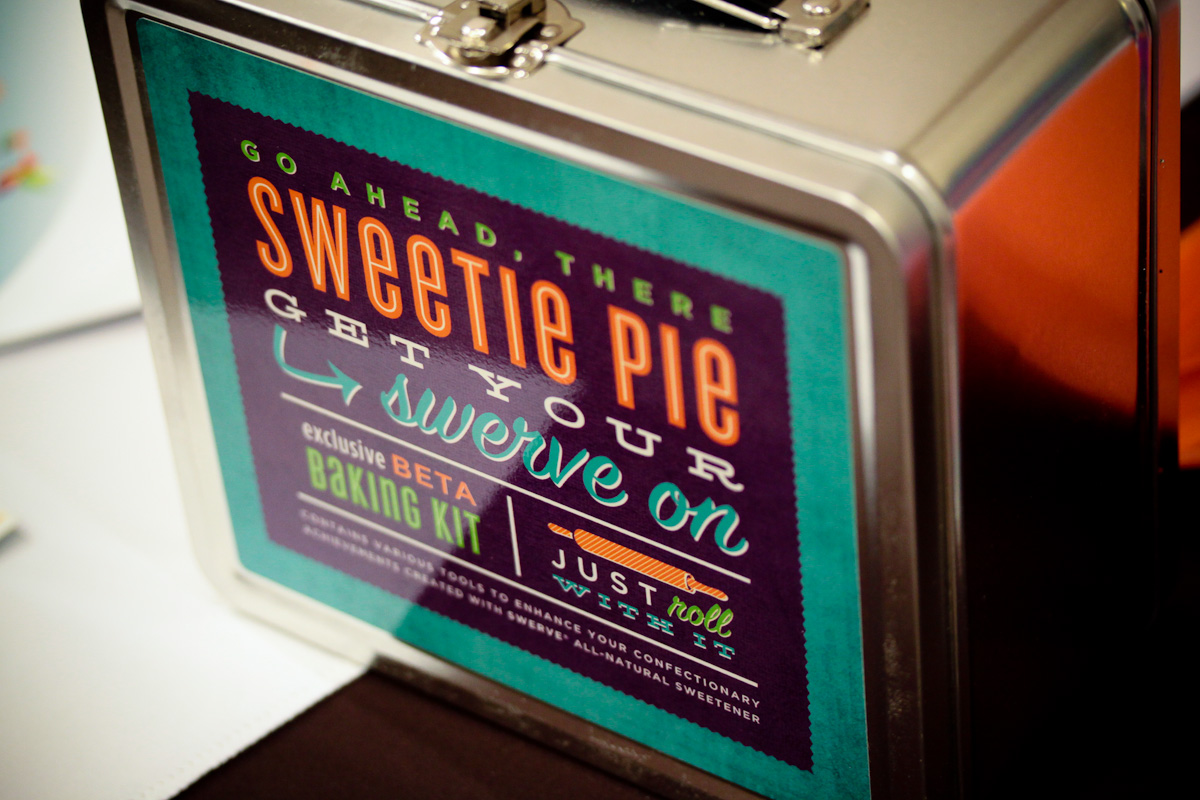
By Alyson Dutch
In a nutshell, marketing is any method used to get a product / service into the hands of someone who wants to buy it; and, preferably can’t live without it. Which methods you choose, depend solely upon who your customer is and how you can most readily engage their interest and get them to pull their credit card from their wallet. Ideally, choose from this list a series of methods that will become your “marketing mix.”
Advertising – One of the most expensive, yet influential marketing methods, advertising is the purchase of space or time in a magazine, newspaper, magazine, TV, radio or online that is filled with fixed content provided by the advertiser. Often compared to PR, advertising, is subjective, while PR is objective. There is high art and science that goes into advertising and it’s incredibly powerful when paired with other forms of marketing, but is very expensive to employ alone, especially for startups. Trade advertising can be very targeted and affordable, but national ads, like magazines can cost anywhere from $160K a month for one page. TV advertising can also be targeted and possibly affordable on cable, but national advertising can’t be done effectively for less than millions of dollars.
Advertorial – a hybrid of advertising and publicity in a paid-for space in print or electronic media. In a magazine, this is something that looks like an article or editorial in style, but the space has been paid for. Advertorial is usually cheaper than advertising.
Awards and recognition – soliciting awards for your product are a good way to gain credibility with your customer, whether it be getting a Good Housekeeping seal for a home product, USDA organic certification for a natural food or a green Energy Star stamp of approval for an eco appliance, awards are like having celebrities in your pocket; they create automatic reputation and move you further along the path of a customer having enough faith to try something new.
Direct mail – The use of the United State Postal Service to sell a product/service. This could be anything from postcards, to special packages of samples sent to scads of addresses which are purchased by SIC (standard industrial classification aka industry identifier) codes and/or zip codes. There is some high technology that has popped up over the past 20 years that makes targeting of address information a science. Direct mail tends to be a very expensive form of marketing, probably only second to advertising, however, it can be extremely effective. Recently, some of the smartest direct mail uses handwriting and what appears to be personally scribbled Post-It Notes to encourage recipients to open the envelope or read the contents.
Direct response TV (DRTV) – This includes all forms of infomercials, however long or short and also “DRTV” purveyors like Home Shopping Network and QVC. There are many companies who sell a full service DRTV experience specific to a genre of product and include magazine ad buys to support “tune in” to the TV spot the produce. DRTV uses buys of time on television to sell a product and now “DRTV” styled campaigns are appearing for free on YouTube.
Email marketing – An aspect of online marketing that uses email, in various forms, to reach a potential customer and links back to a website to sell a product/service. This is considered a form of direct marketing because its results are wholly measurable.
E-marketing – aka online marketing. There are certain schools of thought about selling product online, and it is indeed, an entire world unto itself. Think of e-marketing as another product distribution route, like you might think of choosing retail, wholesale, or creating a product soley for OEM (original equipment manufacturer) distribution. It is still the “wild west” in many regards which make the possibilities truly endless, but in short, all traditional methods of marketing are employed, along with new technologies which can only be made possible on the internet. The success of e-marketing is based on a relationship that falls within and in some cases, games the search process of Google.
Integrated Marketing – this means that different forms of marketing are used together or are inserted into an environment so they appear to be natural to content and not look so much like advertising. A form of integrated marketing are products/services that are “integrated” into a video game, or products that are integrated into a reality TV show. Another example might be simply the addition of a web link integrated into a banner ad. The fact that Tivo made the eradication of TV commercials possibly has made integrated advertising one of the most important trends today. The rise of reality TV is a good example of this, as stand alone advertising is increasingly becoming ineffective because viewers now have a choice about whether they look at it or not.
Gifting suites – Usually held during “awards season,” when the Sundance Film Festival (January), Grammy’s (February), Oscars (March) and Emmys (September) take place, gifting suites take advantage of the time of the year when a plethora of celebrities will be in one place and invite them to sample products in return for “schwag.” Product companies pay for the opportunity to place their product into the physical hands of celebrities, give them product, take photos of them and use the celebrity’s names and photos for their marketing. This is a very cheap and effective way of garnering celebrity credibility for a product without paying for a very expensive celebrity endorsement. There are a handful of companies who do gifting suites, some are much better and reputable than others.
Guerrilla tactics – Generally a very inexpensive, if not free, creative approach to reach a customer without a formalized approach. A flash mob might be an example of this, or an informal street team descending upon a crowd creating a spectacle to grab attention.
Media introduction salons – Media introduction events are business match-making services that put consumer packaged goods companies in direct contact with reporters from magazines, newspapers, blogs, TV and radio shows. Produced in a trade show format, media introduction events are designed to showcase products to reporters at the time of the year they specifically need content for their “annual issues” and “roundup stories.” This form of marketing methodology was created as a cost effective alternative to hiring a PR firm which traditionally charge a monthly retainer with a contractual obligation for a period of time. Media introduction events are beneficial to reporters who each year produce annual “roundup stories” themed to match their news cycle. For example:January, New Year’s resolutions; February, Valentine’s Day gift guides; April, Earth Day; May, Bikini prep season; June, Weddings; July, Summer; September, Back to school; October, Pink products that coincide with Breast Cancer Awareness Month; December, Holiday gift guides. There are a handful of companies who produce these events; some are better than others. Being that we created Consumer Product Events as the first to present these events all throughout the annual news cycle, we, of course, recommend this one!
Network marketing – This is really a form of a business structure, otherwise known as “multi level marketing.” An example of network marketing are companies like Mary Kay Cosmetics or Jafra. Network marketing is incredibly powerful because by its very nature it is exponential and percentages of profits are passed on as the network grows.
Networking – is the basis of relationship building, networking can be utilized as part of a marketing mix, but should be a constant in any entrepreneur’s life. People buy products from people they like. Often they’ll buy products they don’t even need just to support the business of someone they like. Reputation is everything in business. Networking can be done in person by attending professional events, parties, scheduling one on one meetings or online through social networks.
Online marketing – This includes any marketing method used online; a wide spectrum of methods, some of which are online versions of traditional marketing methods and some specific to the web. This may include search engine optimization, sales funnel marketing, pay per click, banner ads, keywords, video sales letters. Usually, these methods are being quickly created and the technology is being up leveled on a constant basis.
Pay Per Click – A very direct online marketing method that allows you to control of how much exposure you get and exactly who is clicking on your ads because you only pay when someone clicks. This is a very powerful way to gather intelligence about your customer and what they are looking for on the internet. Once you determine the exact words and phrases they are using on Google to look for a product like yours, you bid on those words, paying anywhere from $1-$5 for a word or phrase and your three line text ads show up when someone searches for those phrases. This is the most direct method of getting a customer to your website. Pay Per Click (PPC) is available on every major search engine, but it mainly dominated by Google. You can purchase PPC on Facebook and LinkedIn. Tip: use the Google “keyword tool,” it will show you what words you need to use.
PR – There are many synonymous names for PR, publicity, public relations, media relations, but the one thing that differentiates it from all other marketing modalities is that PR is the persuading of the press to report about a product/service. The beauty of PR is the “third party endorsement” that a reporter’s opinion about product/service which provides the #2 method of marketing power available. PR tends to be very inexpensive for the return of investment and next to trade show investment, the first marketing method startups use to launch a product. Known as an “island of objectivity in a sea of advertising prejudice.”
Professional associations – are important places to be seen and involved. The more involved you are with your industry’s professional associations, the more you are seen as a leader and expert in your field. Professional associations, which sometimes produce an industry’s most influential trade shows, are good places to make announcements and to rally your peers to talk about industry factors that affect your business.
Promotions – Usually a formally paid-for opportunity, a promotion is a marketing exercise that starts with an incentive and is engineered to engage a customer in a contest, sweepstakes or some kind of activity that generates awareness of a brand.
Referral programs –Using a referral program of any kind is one of the most effective and inexpensive ways to market because it uses the recommendation of an existing customer, whose already had a good experience with you to serve as a mouthpiece. The elements of a referral program are based on an incentive. The incentive must be formidable, as large a discount or as shiny of an award as you can possibly muster. Humans are driven by incentive. I know an e-marketer who actually gives away a Ferrari to his affiliate marketers to get them motivated. He makes so much money on the backend from this program, the car is a drop in the bucket to get them into action. On the internet, there are specific referral programs called “affiliate programs,” which are powerful, formally organized methods to refer business with an incentive attached.
Sales / distribution – Unlike all the other modalities under the marketing umbrella, sales is the only element on this list that is 100% necessary; the others are chosen based on your customer.
Sampling – A direct experience of getting product into the hands of potential customer. This can be as simple as providing a sample of a coffee in front of a cappuccino shop, food samples in Costco, getting product to magazine stylists who work with celebrities, a free download of a software, sending something in the mail or paying to put your products into a Hollywood celebrity gift bag. The gift bag samplings can be very effective, but don’t provide an opportunity to follow-up with the celebrities who get the product. If you do a sampling with your staff or street team liaising directly with customers, you have an opportunity to gather very valuable feedback from customers. Gifting suites fall under this category.
Search Engine Optimization – The basic and most important part of online marketing, search engine optimization or “SEO,” are all the tactics used to ensure that your website is found on the internet. Having a website up and not doing SEO is like having a party and forgetting to send invitations; it’s that pivotal. There are many ways of doing SEO and practitioners who will offer certain tactics, which get around firewalls and rules that Google imposes very often. Think of your website as you would a retail store you might have bought on 5th Avenue. It’s your flagship and your customers need to know it exists and how to get there. As the head of a company, don’t pawn this off on junior staff or dubious vendors; it’s your responsibility to be involved with this and stay up on the changes that are made by Google on a regular basis. These rules change so frequently and can be so massive that businesses that been put out of business altogether when Google imposes a change; stay up on it.
Social networking – the primary social networks today are Facebook, Twitter, GooglePlus, Instagram, Pintrest and LinkedIn, though, the web is home to millions of social networks specific to certain populations. Social networking is powerful, specifically, for its very unique ability to grow virally.
Special events – the creation of a physical event that is produced to create a material experience of a product/service. Typically, special events are used as launch pads for film or retail store openings or brand announcements. Special events are extremely expensive and usually used by a more mature brand to future concentrate loyalty for existing customers. Non profits use special event, often, for central fundraising techniques, though it is expensive as well, usually producing only 10 cents on the spending of every dollar. Publicists often produce special events and they are engineered specifically to draw press coverage.
Trade shows – A close kin to the first listing here of “sales/distribution,” trade shows are one of the primary methods to find distribution by showcasing your product/service in a concentrated environment of specific buyers who are looking for products/services/content for their retail or virtual shelves. Trade shows are often one of the very first marketing methods a start up uses to establish sales and distribution.
Viral marketing – The optimal desired result of online marketing. If an online marketing technique is well constructed, the infrastructure of the internet and social networks, will automatically move a message virally. “Viral videos” are one of the tools used to entertain and be spread virally, but must be produced in a way that is truly interesting without being a commercial. Anything, however, can be spread virally, whether it be a message, photo, video. Through typically considered to be a digital message of some kind, word of mouth messages could be considered a traditional marketing technique of viral marketing.
Word of mouth – The #1 marketing methodology since the dawn of time. Because no consumer ever buys anything without hearing of it first, word of mouth marketing is getting information about something new from a trusted and credible source, whether it be a friend, family members, colleague, celebrity or trusted reporter, is priceless and the pinnacle of the kind of marketing any company can ever hope to achieve – or create.



